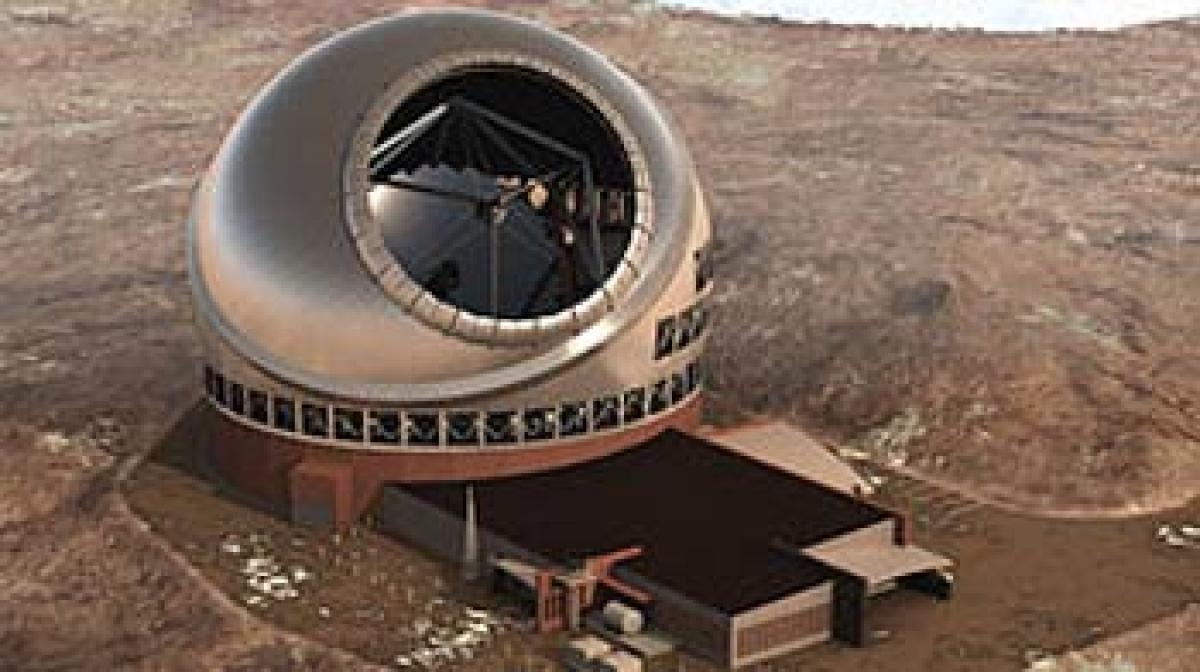Thirty Metre Telescope

The Thirty Meter Telescope (TMT) project is the joint responsibility of the Department of Science & Technology (DST) and the Department of Atomic Energy (DAE) from India.
The Thirty Meter Telescope (TMT) project is the joint responsibility of the Department of Science & Technology (DST) and the Department of Atomic Energy (DAE) from India. As per Indian Institute of Astrophysics (IIA) under DST, the TMT is an international project being funded by scientific organisations of Canada, China, India, Japan and USA.
The Evaluation process for an appropriate site includes scientific suitability (water vapour in the atmosphere, atmospheric turbulence and number of cloud-free nights in a year), infrastructure and logistics for setting-up of such a large international scientific project.
While Mauna Kea, Hawaii is the preferred choice for the TMT project, given the large investments that have already been made and committed, the project is also looking at alternate sites both in the northern and southern hemispheres.
Hanle, Ladakh is one of the sites being evaluated for hosting the telescope. Hanle being the protected area in the state of J&K, the project requires clearances from State and Central agencies such as environmental, defence, external affairs and home affairs.
The total cost of TMT project is about $1.5 billion. The Union Cabinet has given its approval for India’s participation in the Thirty Metre Telescope (TMT) project at Mauna Kea, Hawaii, USA at a total cost of Rs 1299.8 crore from 2014-2023.
TMT will enable scientists to study fainter objects far away from us in the Universe, which gives information about early stages of evolution of the Universe. Also, it will give us finer details of not-so-far-away objects like undiscovered planets and other objects in the Solar System and planets around other stars.
TMT being the largest optical and infrared telescope in the northern hemisphere will enable several discoveries which will surely inspire future generations. Project will also provide state-of-the-art high end technologies to the country, which would benefit a number of industries and R&D centers in the country. The telescope is designed for observations from near-ultraviolet to mid-infrared (0.31 to 28 μm wavelengths).
In addition, its adaptive optics system will help correct for image blur caused by the atmosphere of the Earth, helping it to reach the potential of such a large mirror. Among existing and planned ELTs, the TMT will have the highest altitude and will be the second-largest telescope once the E-ELT is built.














